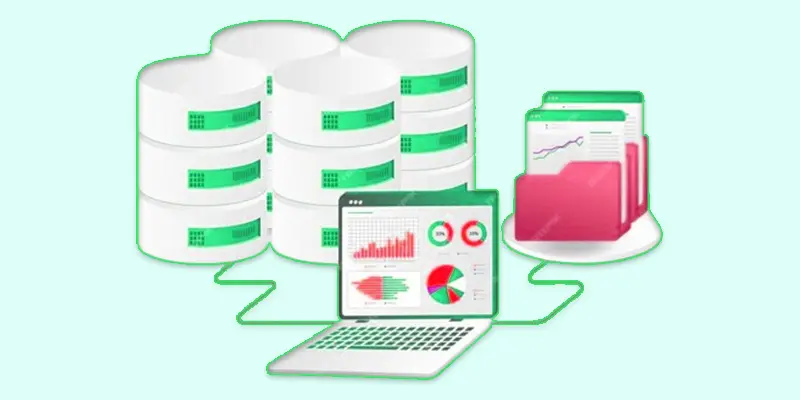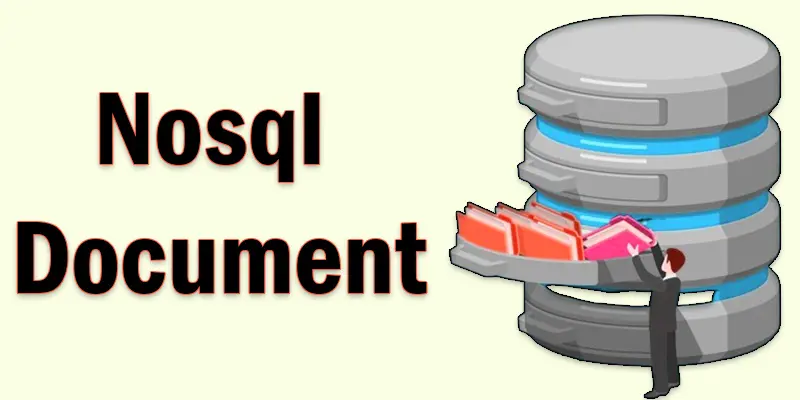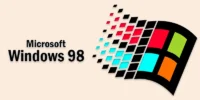NoSQL Document Database: Features, Uses & Limitations
Published: 7 May 2025
Nosql Database Document
Nosql database documents, which frequently use JSON, BSON, or XML, store data in an adaptable, schema-free manner. Many novices are curious, “How do Nosql document databases manage data without tables and relationships?” If you struggle with rigid SQL structures, switching to Nosql can simplify data management, making applications more scalable. Imagine handling dynamic, ever-changing data without worrying about predefined schemas—Nosql document databases make that possible!
What is a Nosql Database
Nosql databases store data in a flexible, JSON-like format as opposed to traditional databases, which store data in tables and rows. It helps developers store, manage, and retrieve data easily without needing a fixed structure.
A Nosql document database’s primary objective is to manage substantial volumes of unstructured or semi-structured data while providing quick performance and scalability. It is ideal for contemporary applications like content management systems, real-time analytics, and e-commerce platforms that demand instant access to data.
Nosql databases started gaining popularity in the late 2000s, as companies like Google, Amazon, and Facebook needed better ways to store and process massive amounts of data. Some well-known document databases include Mongodb (released in 2009) and Couchdb.

Key Features of Nosql Document Databases
- Schema-Free Structure – No predefined tables or columns; documents can store different types of data.
- Flexible Data Storage – Stores data in JSON, BSON, or XML formats, making it easy to handle complex structures.
- High Scalability – Supports horizontal scaling, allowing easy expansion as data grows.
- Embedded Data – Stores related data within a single document, reducing the need for joins.
- Fast Read & Write Operations – Optimized for quick data access, making queries efficient.
- Easy Indexing – Uses indexing for faster searches and better performance.
- Distributed Architecture – Can handle data across multiple servers for reliability.
- Support for Dynamic Fields – Allows adding new fields to documents without modifying the database schema.
- Multi-Model Capabilities – Some Nosql document databases support additional storage models, like key-value or graph structures.
- Ideal for Big Data & Real-Time Applications – Functions well for applications that need scalable, adaptable, and quick data management.
Popular Nosql Document Databases
- Mongodb – The most widely used Nosql document database, storing data in a flexible JSON-like format. It supports powerful indexing, replication, and horizontal scaling.
- Couchdb – A Nosql document database by Apache, using JSON for data storage and MapReduce for querying. It excels in offline-first applications with seamless synchronization.
- Firebase Firestore – A cloud-based Nosql document database by Google, designed for real-time data syncing in web and mobile applications. Ideal for chat apps and collaborative tools.
- This fully managed Nosql document and key-value database, Amazon Dynamodb, is well-known for its outstanding scalability, minimal latency, and smooth interface with other AWS services.
- Rethinkdb – A real-time document database that pushes updates to connected clients automatically, making it great for live dashboards and real-time applications.
- Arangodb – A multi-model database supporting documents, graphs, and key-value storage, making it a versatile choice for complex data relationships.
Advantages of Nosql Document Databases
Nosql document databases are popular for their flexibility and scalability. They store data in a semi-structured format, making them ideal for dynamic applications. However, they also have some drawbacks that may not suit every use case.
Advantages
- Flexible schema for easy data modification
- High scalability and performance
- Efficient handling of semi-structured and unstructured data
- Faster read and write operations compared to relational databases
- Better support for distributed architectures
Disadvantages
- Lack of standard query language (like SQL)
- Limited support for complex transactions
- Data consistency challenges in distributed systems
- Higher storage requirements compared to relational databases
- Fewer industry-wide tools and expertise are available

Limitations of Document Databases
Document databases have some drawbacks that can make them less suitable for certain tasks. They do not use SQL, which makes writing queries more difficult. They also have limited support for complex transactions, making it hard to maintain strict data accuracy. Keeping data consistent across multiple locations can be a challenge. Since they store data in a flexible format, they often duplicate information, leading to higher storage use. Connecting them with traditional SQL-based systems is not always easy. They are also not the best choice for deep data analysis and reporting. Lastly, managing a document database requires special knowledge, which can be difficult for beginners.
When to Use a Nosql Document Database?
- When You Need Flexible Data Storage – Ideal if your data structure changes frequently and doesn’t fit into traditional tables.
- For High Scalability – Best for applications that need horizontal scaling across multiple servers.
- For Big Data & Real-Time Applications – ideal for managing substantial amounts of semi-structured or unstructured data in real time.
- For Web & Mobile Apps – used in content management systems, messaging apps, and e-commerce sites where performance is essential.
- For Iot & Streaming Data – Great for applications that collect and process sensor data, logs, or user activity in real time.
- For Cloud-Based & Distributed Systems – Works well with cloud services and multi-region deployments.
- When You Need Fast Read & Write Operations – Ideal for applications requiring low-latency performance, such as recommendation systems.
- For Applications With Embedded Data – Nosql document databases store related data in a single document, reducing the need for complex joins.

Conclusion About Document Nosql Database
We’ve covered Nosql document databases in detail. If you need a scalable, flexible, and high-performance database, I highly recommend trying Mongodb or Firebase Firestore for modern applications. These databases make handling unstructured data simple and efficient. Want to explore more? Start experimenting with a Nosql document database today and see the difference!
FAQS Nosql Document Store
Nosql databases store data in documents, key-value pairs, wide-column, or graph formats instead of tables. They allow quick read and write operations by distributing data across multiple servers. This makes them scalable, fast, and efficient for handling large datasets.
The cost of databases varies based on storage, features, and usage. Some Nosql databases like Mongodb and Firebase Firestore offer free tiers, while managed cloud solutions like AWS Dynamodb charge based on storage and queries. Costs can range from free to thousands of dollars per month for large-scale applications.
The most extensively used NoSQL database for large data, mobile, and online applications is Mongodb. Other popular Nosql databases include Couchdb, Firebase Firestore, Amazon Dynamodb, and Arangodb. Each has unique features suited for different use cases.
One kind of Nosql database that stores data in document formats such as XML, BSON, or JSON is called a Nosql document store. It allows schema-free, flexible data storage, making it ideal for applications with changing data structures. Examples include Mongodb, Couchdb, and Firebase Firestore.
No Nosql databases are non-relational, meaning they do not use tables, rows, or strict schemas like relational databases. However, some Nosql databases support relationships within documents or through graph-based models. While not truly relational, they can still handle complex data connections efficiently.
No, Nosql is not a programming language. It refers to a type of non-relational database designed for flexible and scalable data storage. Unlike SQL, Nosql databases use different query methods based on their data model (e.g., document-based, key-value, or graph-based).
SQL databases can be slower because they use a fixed schema and rely on complex joins to combine data from multiple tables. As data grows, queries take longer due to indexing and relationship constraints. NoSQL databases skip these rigid structures, making data retrieval faster for many applications.

- Be Respectful
- Stay Relevant
- Stay Positive
- True Feedback
- Encourage Discussion
- Avoid Spamming
- No Fake News
- Don't Copy-Paste
- No Personal Attacks

- Be Respectful
- Stay Relevant
- Stay Positive
- True Feedback
- Encourage Discussion
- Avoid Spamming
- No Fake News
- Don't Copy-Paste
- No Personal Attacks





